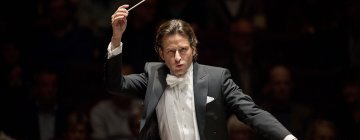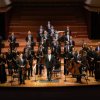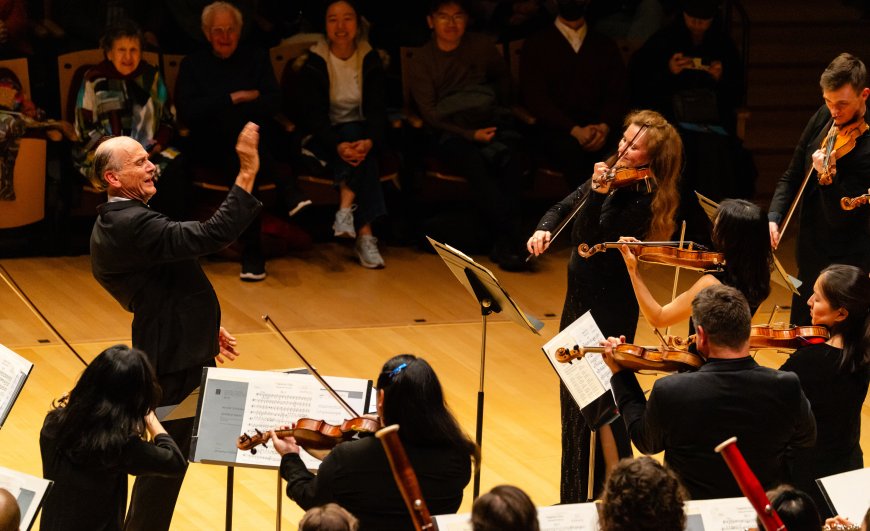
The Verbier Festival Chamber Orchestra (VFCO), the touring ensemble of one of Europe’s leading classical summer festivals, landed at Stanford University last week. The climax of the musicians’ five-day residency was a remarkable performance presented by Stanford Live on Friday, April 25, at Bing Concert Hall.
Each July and August, the Verbier Festival, held in its namesake alpine village in Switzerland, convenes an orchestra of young professionals, and this part-time touring ensemble represents an all-star collection of alumni.
The VFCO’s music director is Gábor Takács-Nagy, a Hungarian violinist and co-founder of the Takács Quartet who now works mostly in front of orchestras. Not “on the podium,” as he conducts without one, as well as without a baton. The VFCO is a small orchestra, highly responsive to his emphatic direction.
Friday’s concert opened with Arnold Schoenberg’s Verklärte Nacht (Transfigured night), originally for string sextet and here arranged by the composer for string orchestra. This lush and full-bodied late-Romantic tone poem, dating from before the composer’s adoption of atonal and serial composition methods, responds well to an emotionally expressive approach.
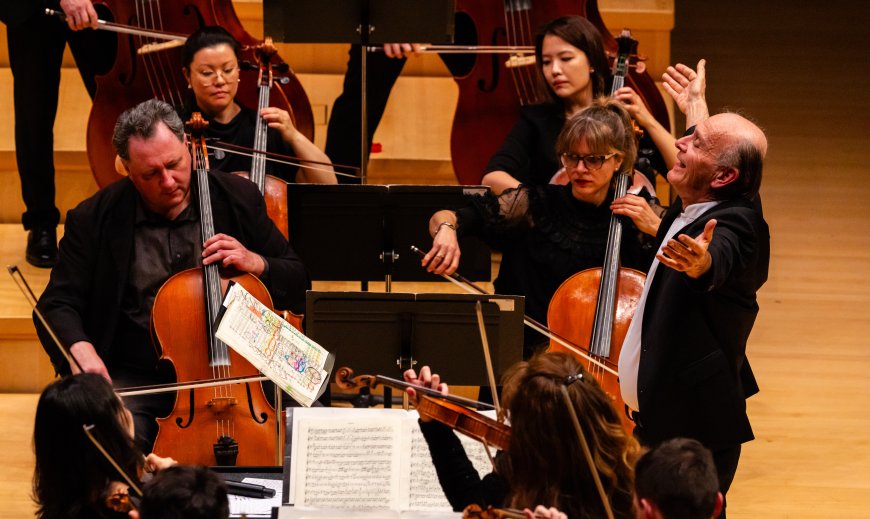
The VFCO’s 24 string players produced a powerful sound despite their limited numbers. Takács-Nagy marked off the sections of the work clearly, and he encouraged the orchestra to exploit variations of tone color. The music broke the slow and quiet frame by surging upward into impassioned climaxes.
Next on the program was Gustav Mahler’s Lieder eines fahrenden Gesellen (Songs of a wayfarer), a brief cycle of four lovelorn songs whose melodies the composer would later appropriate for his Symphony No. 1. The cycle was presented here in an 11-instrument chamber arrangement by Schoenberg, though with a synthesizer substituting for the called-for harmonium.
Baritone Johannes Kammler sang with a broad, clear voice that carried a degree of immunity to moods and characterization in the texts. He did convey differences between the blithe good spirits of the second song and its resigned ending and between the anger of the third song and its quietly reminiscent middle section. His diction was entirely intelligible and his volume penetrating, giving his interpretation a narrative force that blended well with the bright accompaniment.
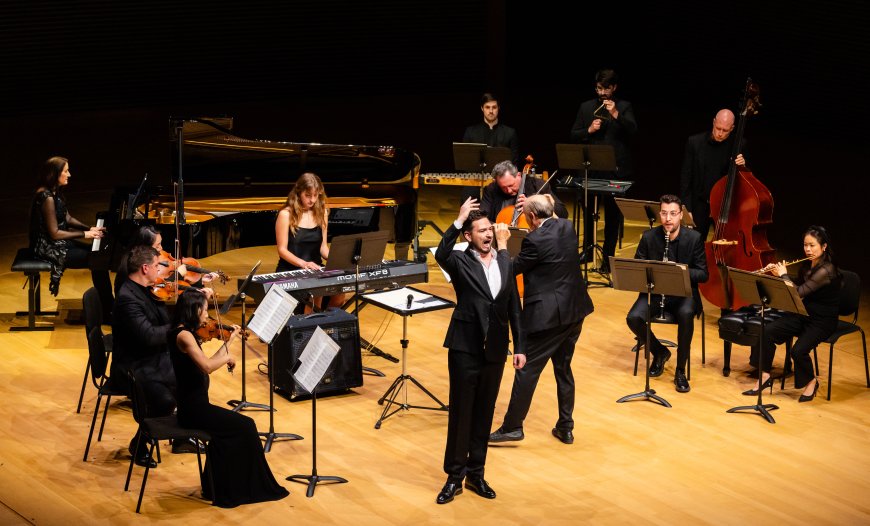
To help the audience in understanding, Kammler read aloud abridged English translations of the poems before each movement in a deadpan voice that somehow made the sorrows funny. (Takács-Nagy had also read aloud a translation of the entire Richard Dehmel poem that inspired Verklärte Nacht.)
Beethoven’s Symphony No. 7 in A Major, which concluded the program, offered something entirely different. Where Schoenberg’s strings had been slow and solemn and Mahler’s songs introspective, this Beethoven burst with bumptious explosions, displaying the youthful energy more associated with the composer’s first two symphonies. Dynamics were exaggerated in both directions, pianissimos reduced to minuscule crawls while fortissimos and sforzandos jumped out as surprises.
The tempos displayed the greatest energy. The first two movements were fairly fast — notably so in the Allegretto, which is traditionally taken much more slowly. The scherzo was even faster, and the finale fastest of all. By this point, Takács-Nagy had to conduct in phrases; any smaller units just went by too quickly.
Having served this sizzling steak, the orchestra kept the heat high with equally blazing performances of two encores: Brahms’s Hungarian Dance No. 5 and (why not?) Johann Strauss II’s Hungarian Polka. Then, to lower the temperature and the standing ovations, the ensemble played a quiet third encore, “In paradisum” from Gabriel Fauré’s Requiem.
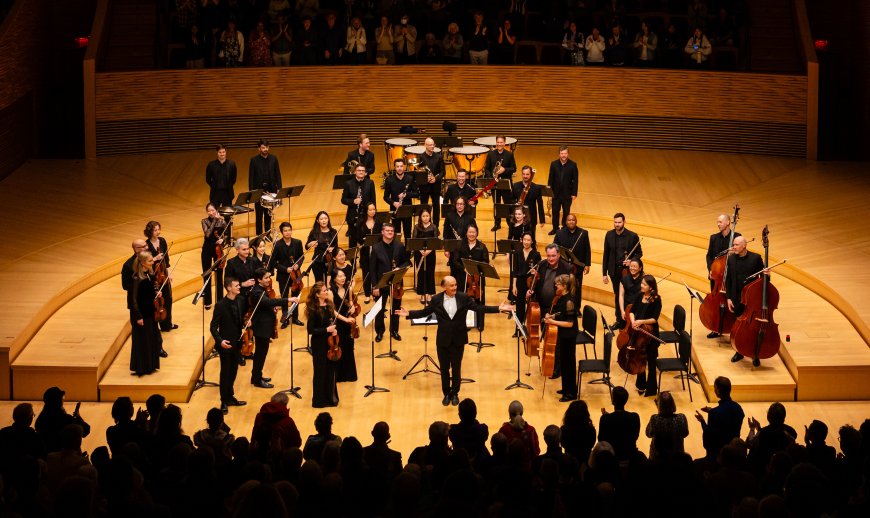
There was more to the VFCO’s Stanford residency than Friday’s performance. Takács-Nagy, Kammler, and members of the orchestra gave master classes and coaching sessions for student musicians, who presented the results of their efforts in a public showcase concert in Bing on Wednesday, April 23. The music was all by Mahler or members of the Second Viennese School (Schoenberg, Anton Webern, and Alban Berg), as these composers form a theme of Stanford Live’s season and are specialties of the Verbier musicians.
Most of Wednesday’s performers were Stanford undergraduates, but an outstandingly adept version of Webern’s tiny and elaborate Six Bagatelles, Op. 9, was played by a high school ensemble called the Zapdós Quartet. The evening concluded with Mahler’s early one-movement Piano Quartet in A Minor, treated to a rhapsodic performance by three VFCO string players and pianist and Stanford Music Department lecturer Laura Dahl.
